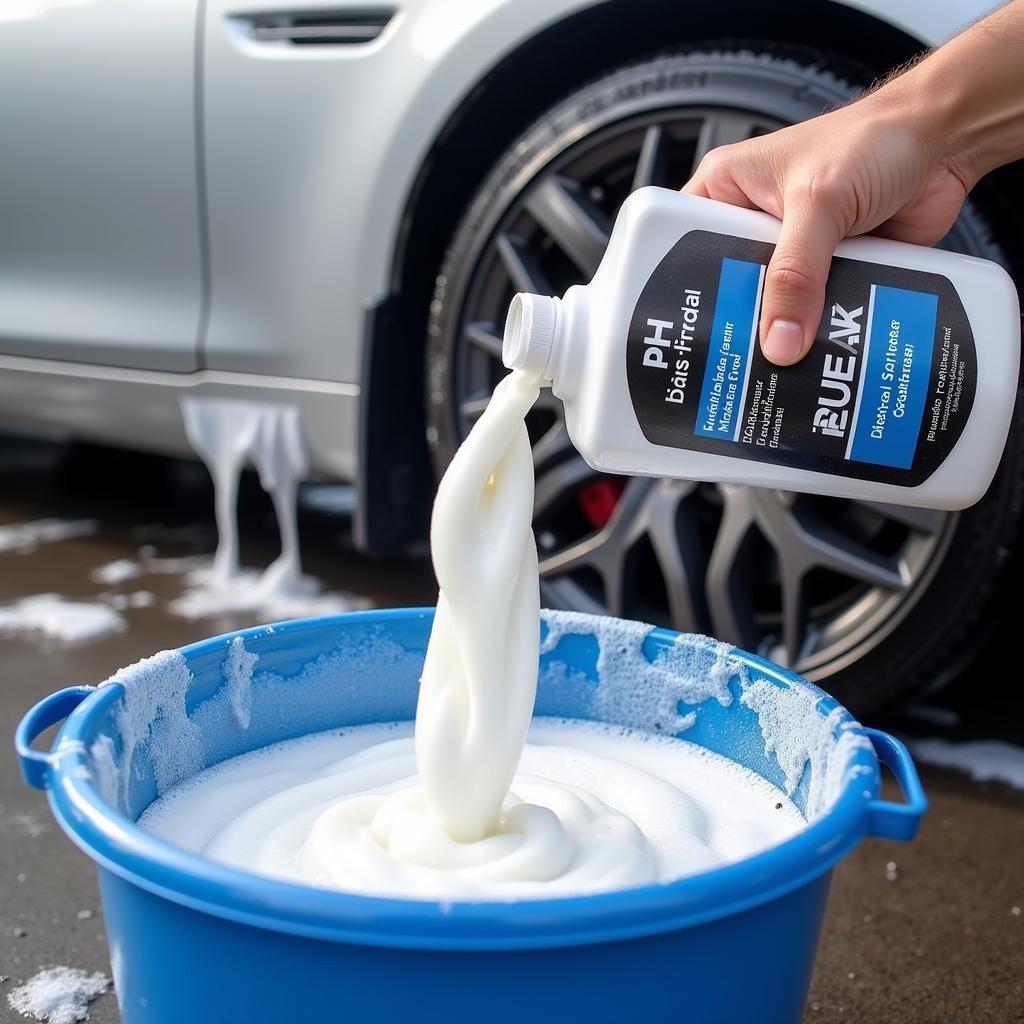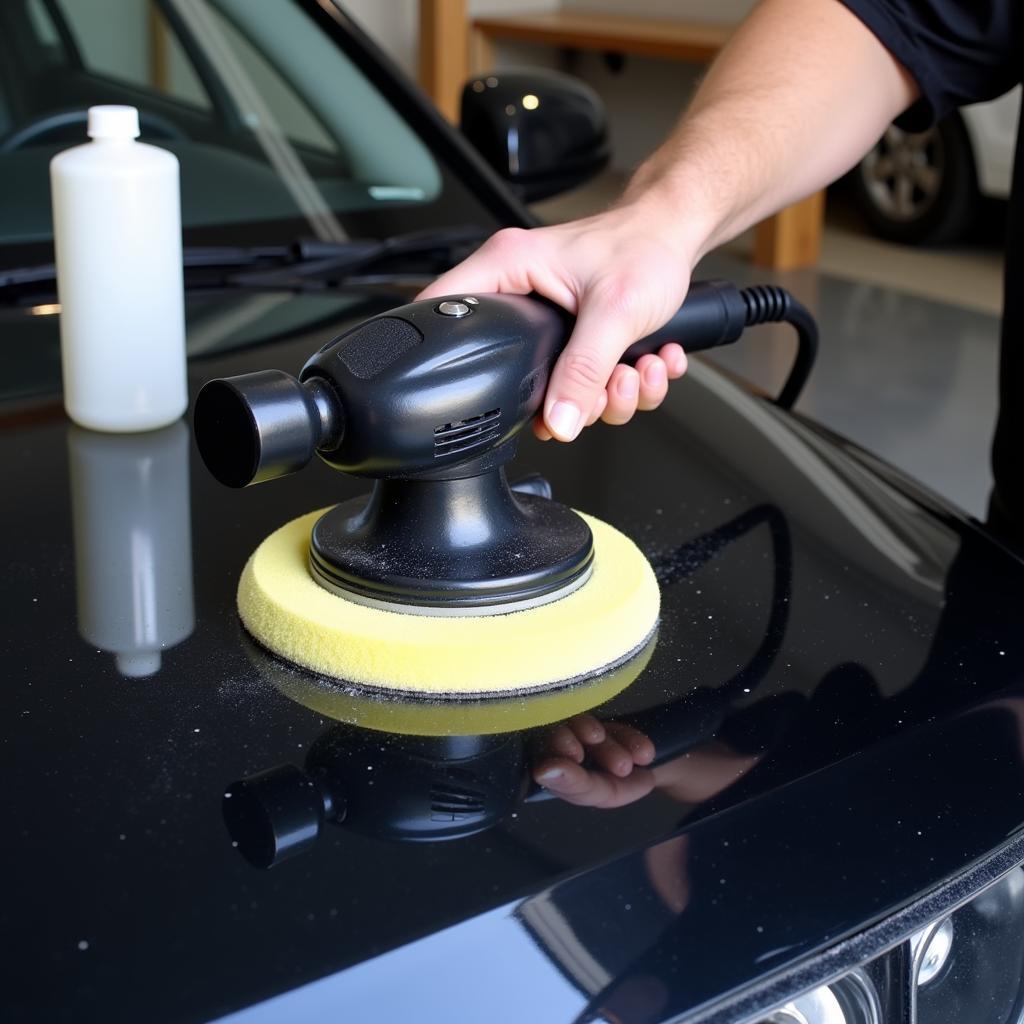Car detailing is more than just a wash and wax; it’s an art form. Achieving a showroom shine and preserving your car’s paintwork requires the Best Chemicals For Detailing Cars. This guide will delve into the essential chemicals you need, offering expert advice and recommendations for achieving professional-level results.
Choosing the right car detailing chemicals can be overwhelming. With so many products on the market, each promising miraculous results, knowing where to start can be tricky. This comprehensive guide will break down the essential chemicals needed for a complete car detail, from pre-wash to final protection. We’ll explore different product types, discuss their uses, and help you choose the best chemicals for detailing cars to achieve a flawless finish. For example, are you looking for the best carnauba wax for car detailing? We’ve got you covered.
Pre-Wash: The Foundation of a Great Detail
Pre-washing is a crucial first step in detailing. It loosens and removes heavy dirt and grime before you touch the paint, minimizing the risk of scratches during the wash process. Essential pre-wash chemicals include:
- Traffic Film Remover (TFR): This powerful cleaner is designed to dissolve road grime, bug splatters, and other stubborn contaminants.
- Snow Foam: A thick, clinging foam that blankets the car, lifting dirt and allowing it to be rinsed away.
- Citrus Pre-Wash: A gentler alternative to TFR, ideal for lightly soiled vehicles.
Washing: Gentle Cleaning for a Spotless Finish
Once the pre-wash is complete, it’s time for the main wash. This stage requires a pH-neutral car wash soap specifically formulated to lift remaining dirt without stripping wax or sealant.
- pH-Neutral Car Wash Soap: Choose a high-quality soap that produces thick suds and lubricates the paint surface to prevent swirling.
 pH-Neutral Car Wash Soap for Detailing
pH-Neutral Car Wash Soap for Detailing
Decontamination: Removing Embedded Contaminants
Even after washing, microscopic contaminants can remain embedded in the paint. Decontamination removes these particles, leaving a smooth surface ready for polishing.
- Iron Remover: This chemical reacts with iron particles (brake dust), turning them purple and making them easy to rinse away.
- Tar Remover: Dissolves stubborn tar and adhesive residues without harming the paint.
- Clay Bar/Mitt: Used with a lubricant, a clay bar or mitt physically removes bonded contaminants.
Polishing: Restoring Paint Perfection
Polishing removes minor scratches and swirl marks, restoring the paint’s clarity and gloss. This stage requires specialized polishes and pads.
- Cutting Polish: A more abrasive polish designed to remove deeper imperfections.
- Finishing Polish: A finer polish that refines the paint and enhances gloss.
- Polishing Pads: Choose the appropriate pad based on the polish and the desired level of correction. If you are new to this and looking for recommendations on the best car detailing tools to have, our guide can be extremely helpful.
 Car Polishing Process for a Showroom Shine
Car Polishing Process for a Showroom Shine
Protection: Shielding Your Car’s Finish
The final step is protecting the paintwork with a sealant or wax. This creates a barrier against environmental contaminants and UV rays, preserving the shine and extending the life of the paint.
- Sealants: Synthetic polymers that offer long-lasting protection and durability.
- Waxes: Natural carnauba or synthetic waxes that provide a warm, deep gloss. Check our guide for the best detailed model cars to see examples of perfectly waxed finishes.
What are the best chemicals for cleaning car seats?
For cleaning car seats, consider dedicated upholstery cleaners and leather conditioners depending on your car’s interior. We have a guide on the best way to detail car seats which offers more in-depth information.
Conclusion
Using the best chemicals for detailing cars is crucial for achieving professional results. By understanding the function of each chemical and choosing high-quality products, you can transform your car’s appearance and protect its paintwork for years to come. Investing in a good detailing kit, like the ones featured in our guide on the best detailing kit for white cars, can make the process significantly easier.
FAQ
- What is the difference between a sealant and a wax?
- How often should I detail my car?
- What is the best way to remove water spots?
- Can I use dish soap to wash my car?
- What is the purpose of clay bar treatment?
- How do I choose the right polishing pad?
- What is the best way to maintain my car’s finish after detailing?
Need help with your car detailing project? Contact us via WhatsApp: +1(641)206-8880, Email: [email protected]. Our 24/7 customer support team is ready to assist you.

Leave a Reply